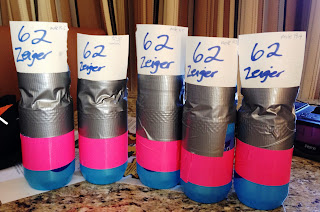Managing a race is like putting together a puzzle; the pieces have to fit together just so for a perfect day. Rarely, if ever, do the pieces coincide in such a manner during a race which always leaves me with a feeling that things can be better next time, that if I can change “x” than I can have that elusive perfect day. The problem is that once I think I have learned it all, a new “x” pops up and throws me for a loop and I am therefore enticed to the start line to fix that problem. You can see how this cycle repeats itself time and again, continuously beckoning me back to the races. Hence, the puzzle is never completed.
I have learned, though, that there are certain givens in racing, the so-called “tenets of racing”. If you learn these, you can at least eliminate some potential problems, which of course, leaves room for any number of new problems that will leave your puzzle forever incomplete.

1. What feels easy at the start feels hard at the end
Having just run a marathon, this tenet is fresh in my mind. The first few miles of the race I was amiably chatting and joking with the competitors around me. By mile 20, I was solemn, not noticing or caring about those in my vicinity. The pace in the first 20 miles felt like jogging, but by the end it was arduous and instead of holding steady my pace was bouncing around like a ping pong ball. Proper pacing is essential; do not be deceived by the relative ease at the beginning, which brings me to point 2.
2. Don’t go out too hard
The feeling of comfort at the start of a race lures people into a false sense of what they can achieve. An athlete I coach recently competed in an Ironman. He went through the first half of the bike 10 minutes faster than any half Ironman he had done. The result? A DNF. I asked him why he went so fast in the beginning and he replied that it felt really good. Going out too hard is not necessarily a subjective measure – you cannot rely on how you feel, because you should feel good. You need to preset a pace, wattage, or heart rate, all of which are objective measures, to dictate how you will execute the early stages of your races. I always tell my athletes before an Ironman, nobody ever finishes an Ironman and says, “I wish I had gone harder on the first loop of the bike.”
3. Training never lies
When deciding race goals and strategies, look to your training. What wattage did you hold on your long rides? What pace did you run your intervals? Were you consistent in your workouts over a long period of time, or were you hampered by injury or illness? All of these parameters will guide you toward making the right decisions in race execution. Leading into the Twin Cities marathon I had many workouts that indicated I was ready to run a PR. But, I also had many workouts hampered by my rib injury signifying I was ready for a DNF. I ran the race hoping for the best. My training told me I should expect the worst, and so when I was unable to finish the race due to rib pain it was not a shock. Conversely, my training leading up to CIM was much smoother and I did not miss any workouts due to the injury. My race pace and finish time mirrored my training paces.
4. It is hard to imagine things going wrong when things are going so right
Races often start off spectacularly. The execution is perfect, the weather stunning, the day unfolding according to plan. Then, suddenly, you get a flat tire. Or, your stomach starts to rebel. Or, your bottle with your nutrition falls off your bike. Or, your legs start to cramp. Or, you get dizzy. Or, you go off course. Or, a recurring injury flares up. Or, your body just falls apart. Or, … Any number of things can happen during a race ending a seemingly ideal day . The most you can do is manage the problem if possible or call it a day if your health is at risk (or if your bike is unrideable).
5. Have fun
This is the single, most important tenet of racing. If it isn’t fun you should find another hobby. Success in sport is difficult and requires time, patience, perseverance, and heart ache. Ultimately, there must be an element of enjoyment to make it all worth it, to balance out the negatives. I distinctly recall, at mile 16 of the marathon two weeks ago, thinking to myself, “Wow, I am really enjoying this race.” The crowd support was motivating, my body was cooperating, the course was suited to me, and I had people to run with. I truly took some time to enjoy the moment.
I realize that these 5 tenets represent a mere fraction of the overall “tenets of racing.” I have many more and I am sure you do as well. But, I cannot spill all my secrets at once, can I?



























